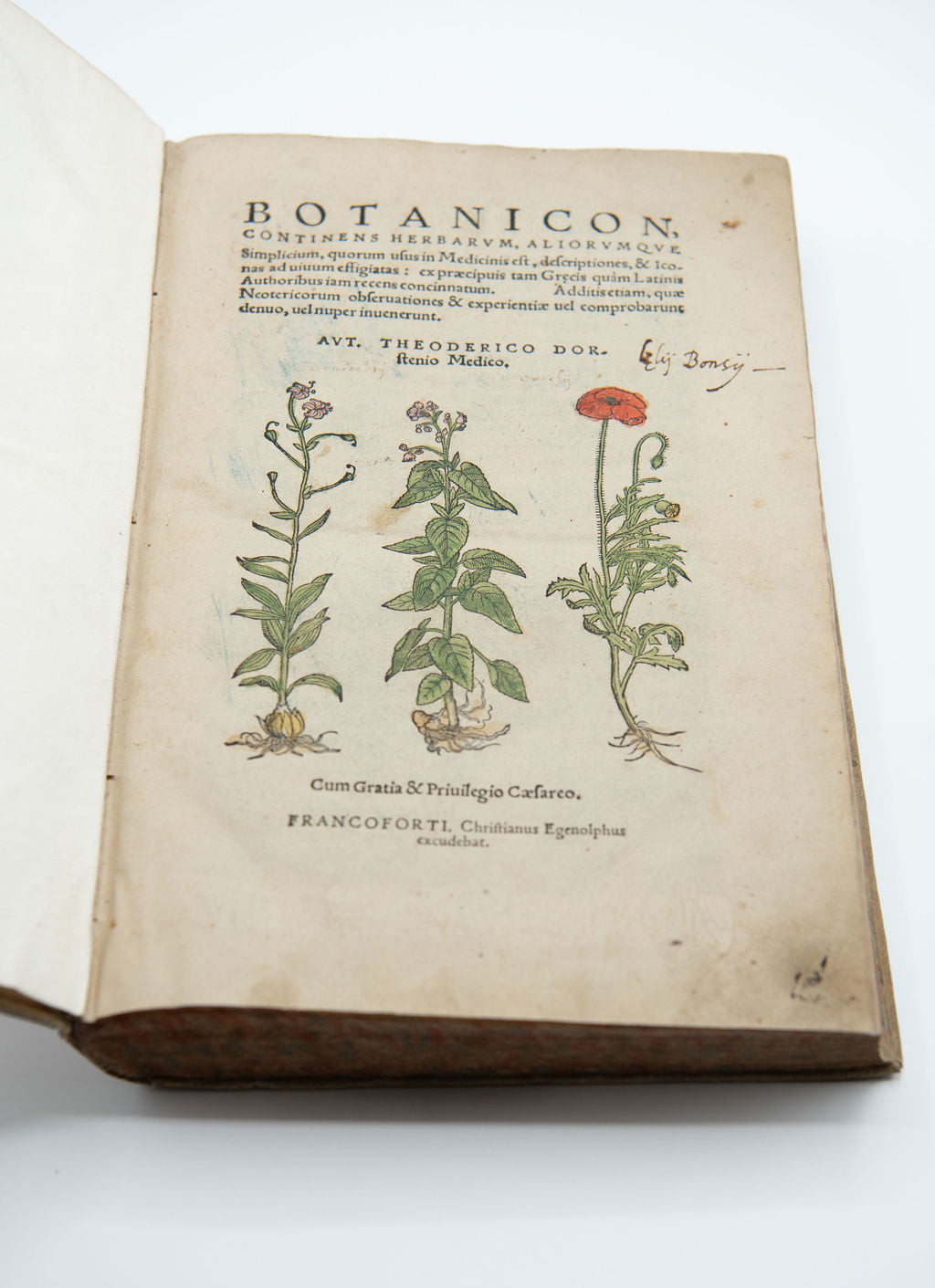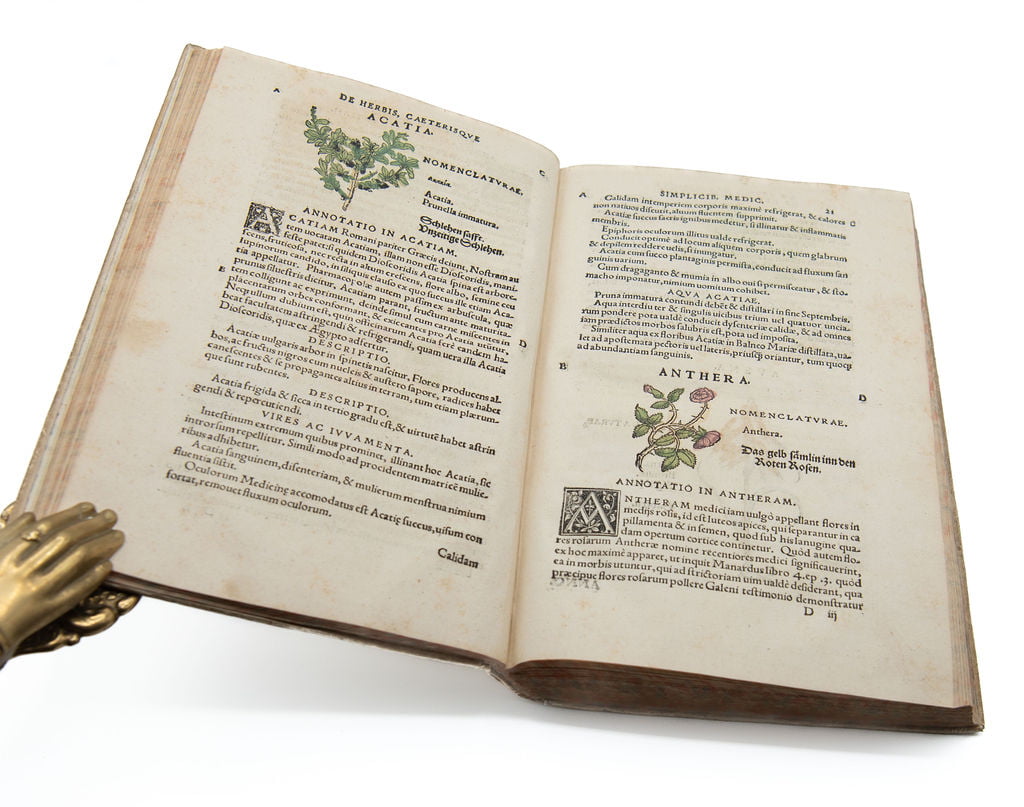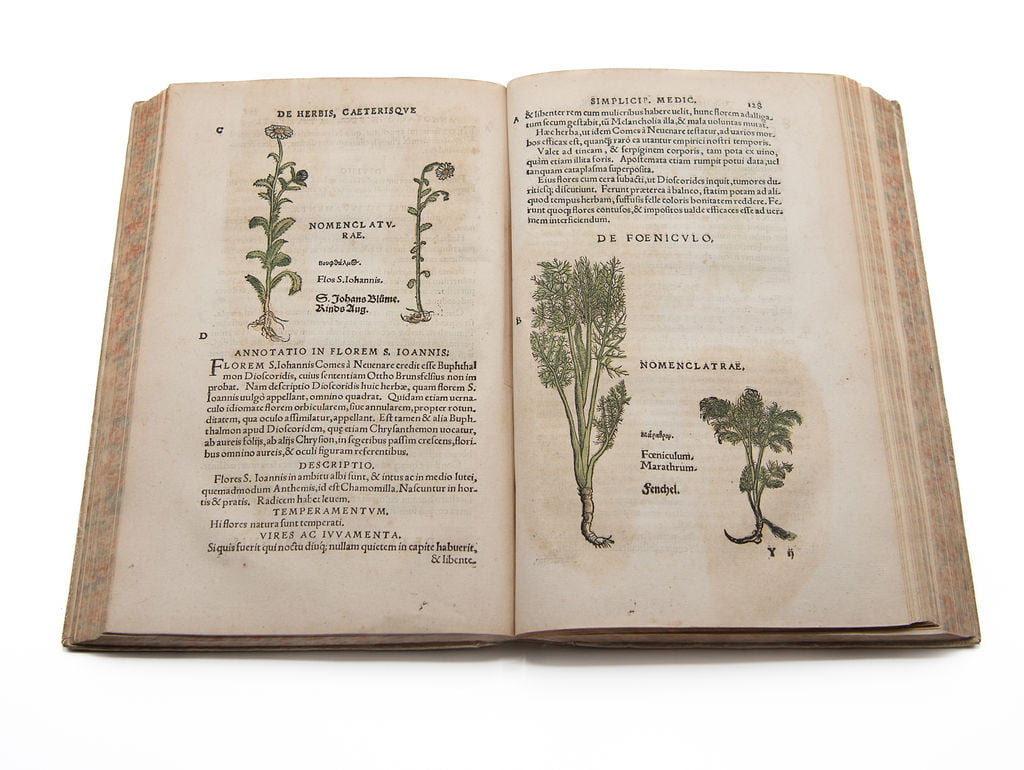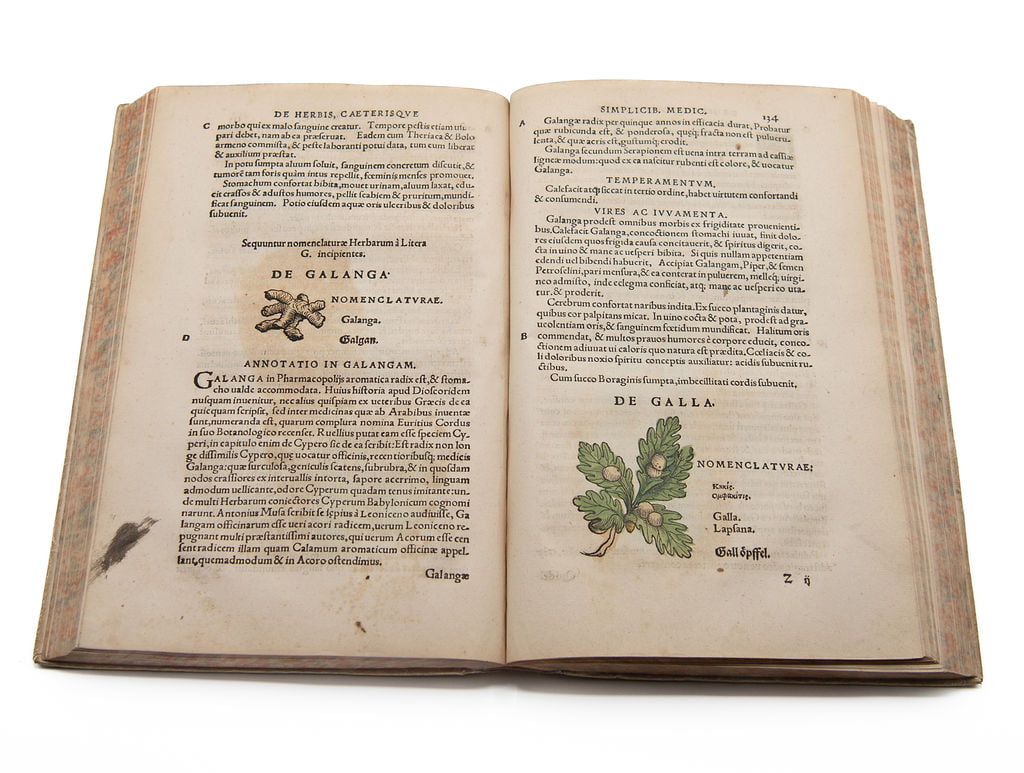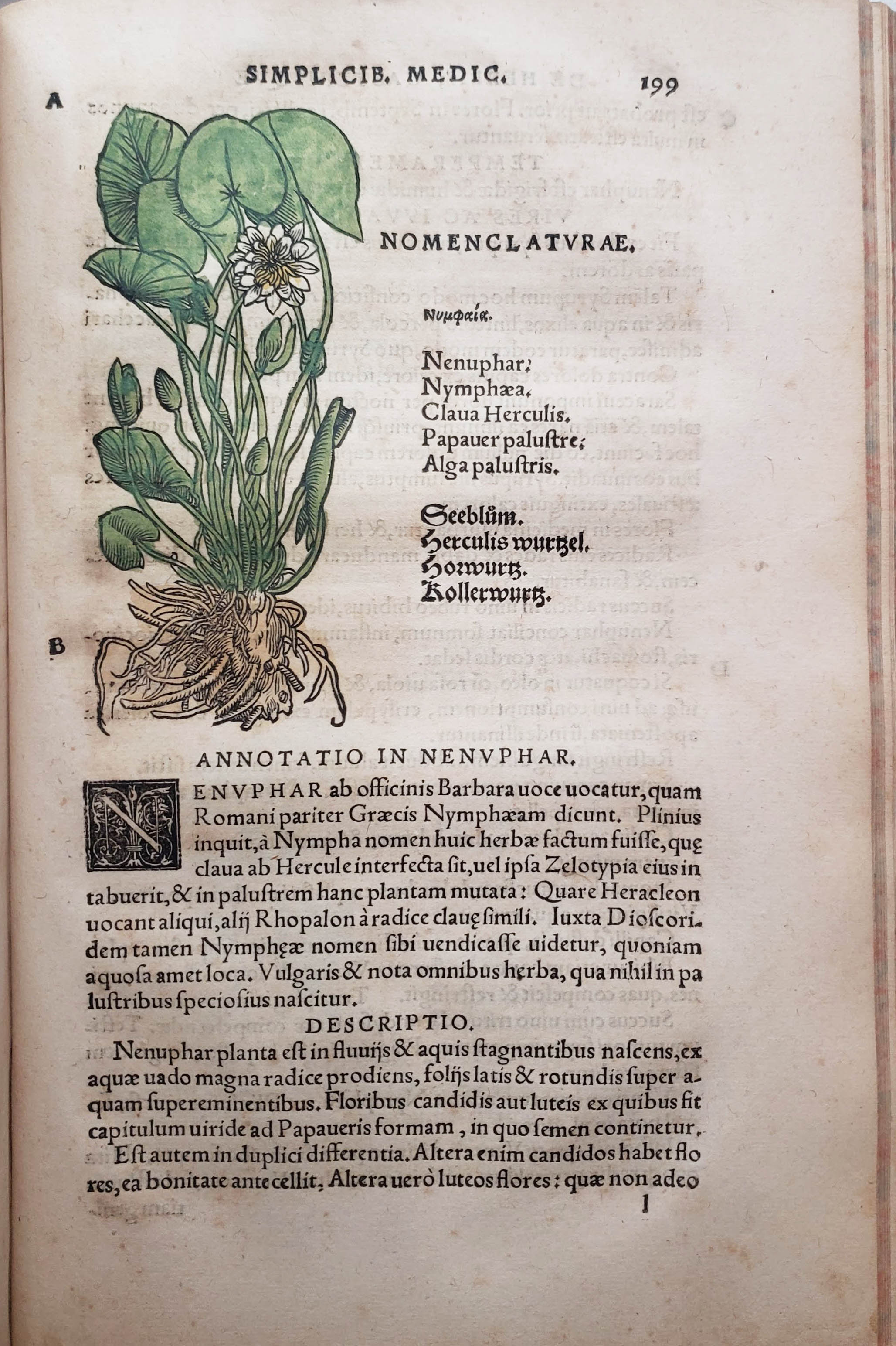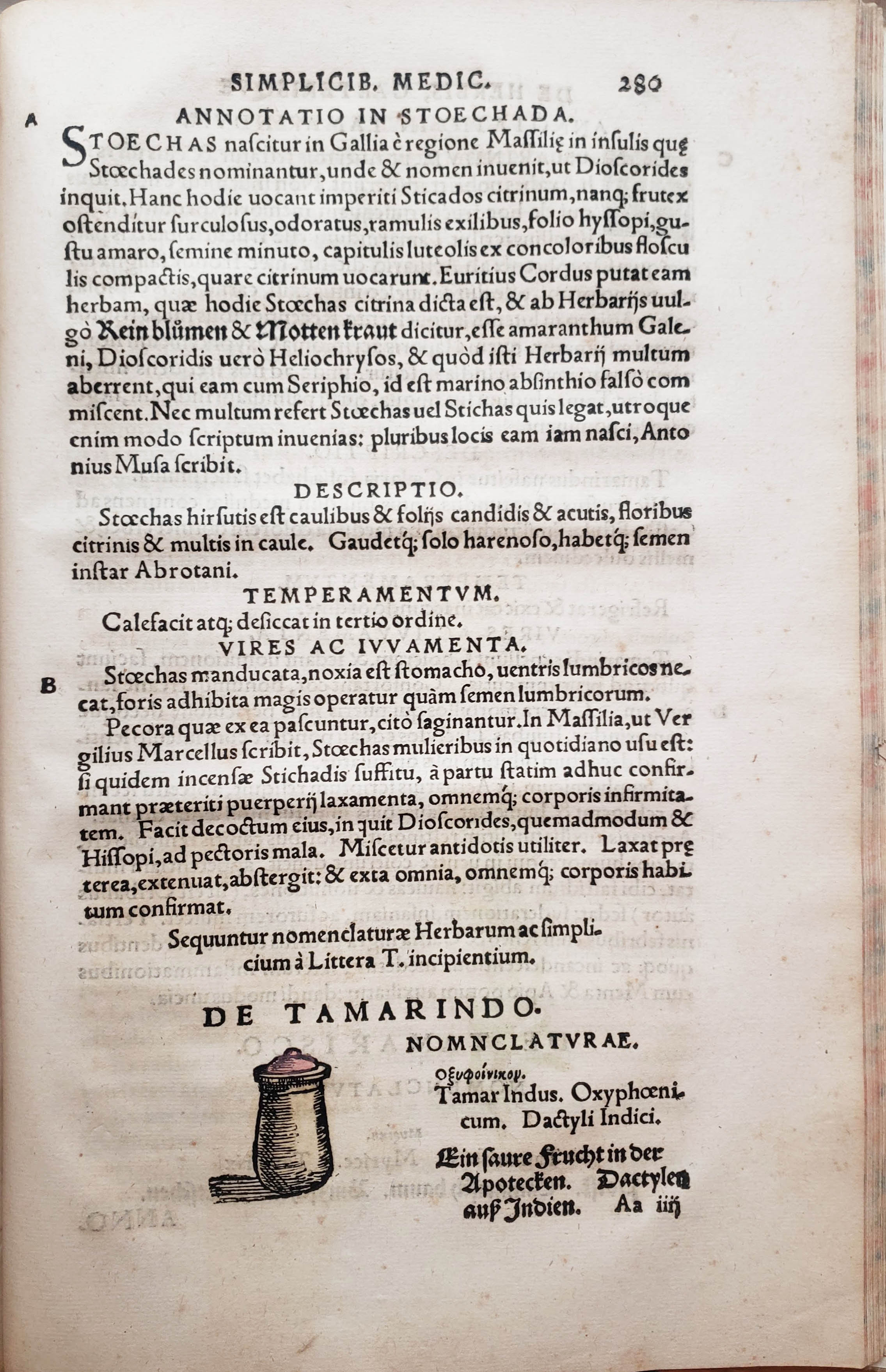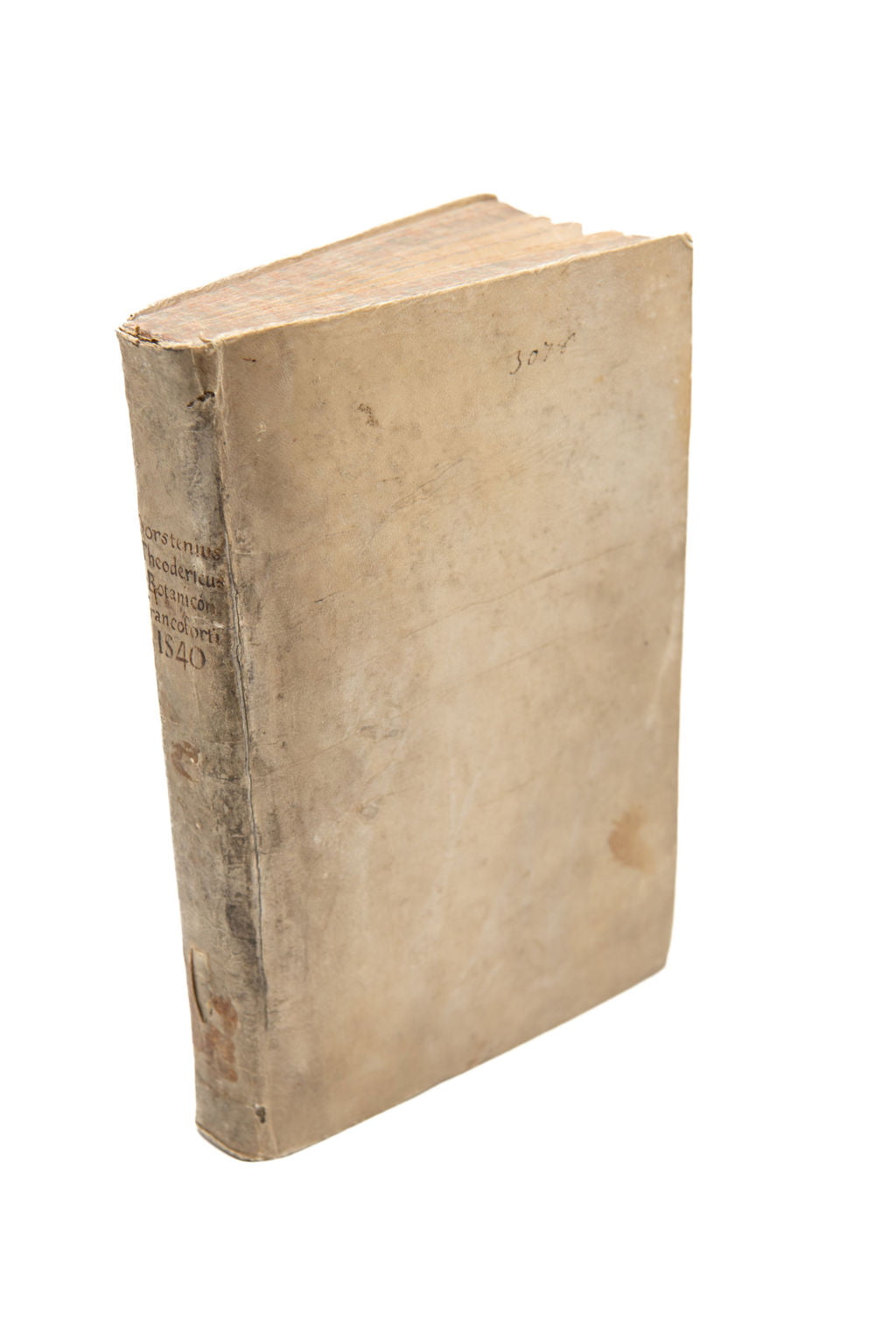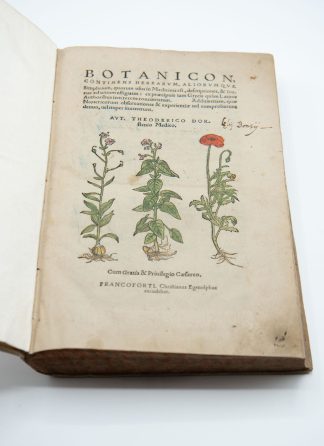DORSTEN, Theodor
BENEDETTO VARCHI’S COPY
Botanicon
Frankfurt, Christian Egenolff, 1540£39,500.00
FIRST EDITION. Fol., ff. [10], 306. Predominantly Roman letter, some Greek and little Gothic; historiated initials, illustrated throughout with more than 300 woodcuts, all charmingly coloured by contemporary hand; some foxing, age yellowing, damp stain in lower margin of *ii, ink splash to *vir and in margin of 133v, clean tear at foot of 148v, marginal worm trail to final three gatherings. A good copy in early plain vellum boards; early title on spine and number on front cover, marbled edges; upper joint cracked, little hole on spine; contemporary autographs on title of ‘Benedictj Varchij’ and ‘Lelij Bonsij’; annotation by Bonsi on 39v.
First and only edition of this beautifully illustrated herbal. One of the two printing variants, here the title has woodcut plants instead of printer’s device. All the numerous illustrations were consistently coloured, probably for the publisher. Theodor Dorsten (1492-1552) was a physician and botanist, as well as professor of medicine at the University of Marburg. In recognition of his contribution to botanic studies, Charles Plumier and Carl Linneus named Dorstenia a family of the Moraceae (mulberry or fig family). As Dorsten explains in the preface, he was commissioned by the renowned publisher of scientific books Christian Egenolff to expand and translate into Latin the Kreutterbuch von allem Erdtwaechs by Eucharius Rösslin, published in 1533.
Dorsten’s herbal was expanded in its turn in 1557 by Egenolff’s son-in-law, Adam Lonicer. The Botanicon provides a remarkable account of sixteenth-century botanic and pharmacopeial knowledge. It describes alphabetically hundreds of herbs, along with tubers, spices, fruits, nuts, a couple of mushrooms and some liquids very broadly speaking derived from plants, such as vinegar, resin, honey, but also asphalt, cheese and water. Entries comprise a detailed illustration, the different names in Greek, Latin and German, references from ancient and contemporary authorities, description of physical qualities and healing properties and often recipes for medicaments. Those who followed some of the misleading prescriptions must have suffered greatly. Bitumen is said to cure cancer when mixed with vinegar and stop women’s periods when combined with beaver’s secretion; inhaling its smoke is supposed to prevent mucus (probably), while one gets rid of tooth pain by chewing it (perhaps). Luckily, it was hard to find asphalt at the time. It was mainly collected on the shores of the Dead Sea and thus was known as bitumen Iudaicum. The various uses suggested by Dorsten for cannabis (f. 60r) are equally noteworthy and maybe more appropriate.
This copy belonged to the famous Italian humanist Benedetto Varchi (1503-1565), as indicated by his faint autograph on the title. Varchi possessed vast and multifaceted knowledge. Member of several Italian circles and in particular the Florentine Academy, he was mainly interested in philosophy and literature. Yet, he did not disregard science. Among the 85 books identified as annotated by him, there are important treatises on maths, astronomy, veterinary and human medicine (see A. Siekiera, ‘Benedetto Varchi’, in Autografi dei letterati italiani: il Cinquecento, I, Rome 2009, pp. 337-357, at pp. 343-348). This copy was later acquired by a close friend of Varchi, Lelio Bonsi (1532-post 1569). The two exchanged some sonnets and Bonsi was included among the interlocutors of Varchi’s linguistic dialogue Ercolano. A member of the Florentine Academy and of the Order of St Stephen, Bonsi was also a legatee of Varchi’s will.
BM STC Ger., 253; Adams, D 859; VD 16, D 2442; Durling, 1203; Wellcome, I, 1861; Schmid, Kräuterbücher, 100; Pritzel, 2696.In stock


